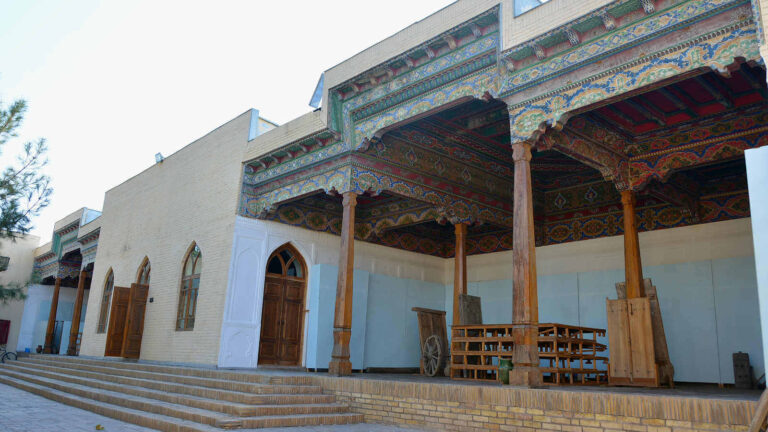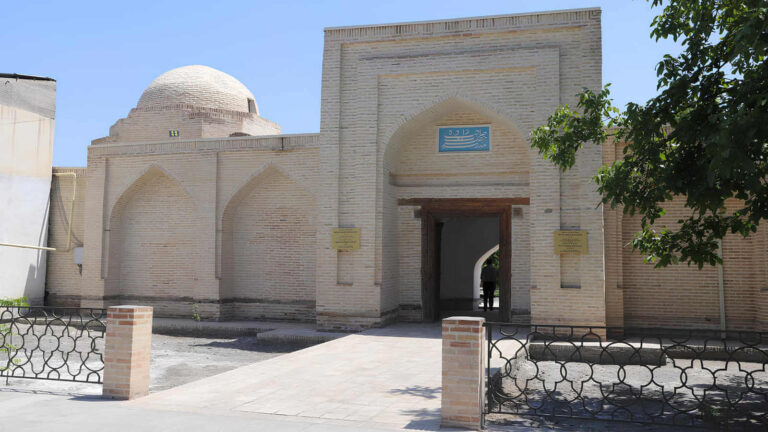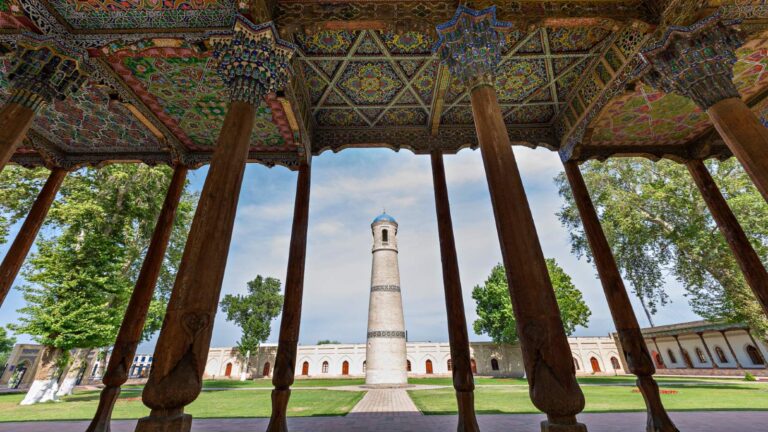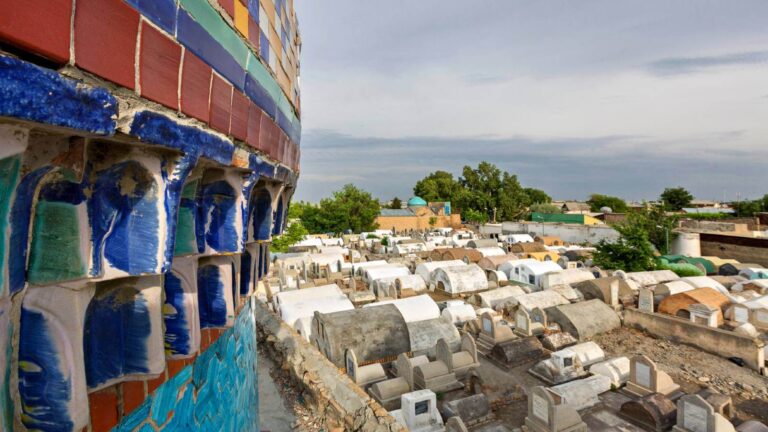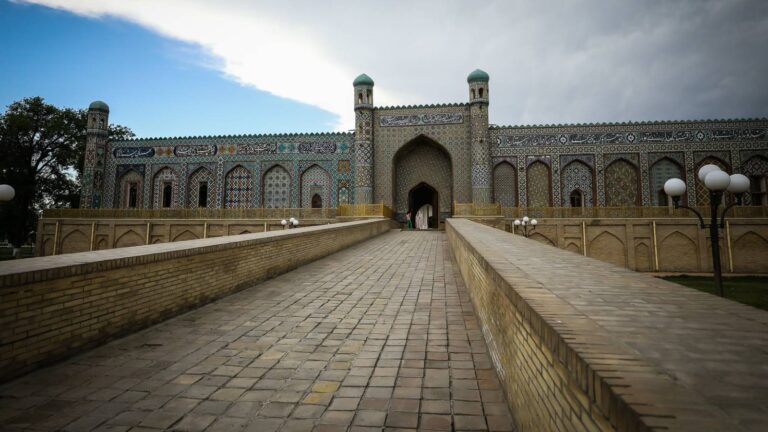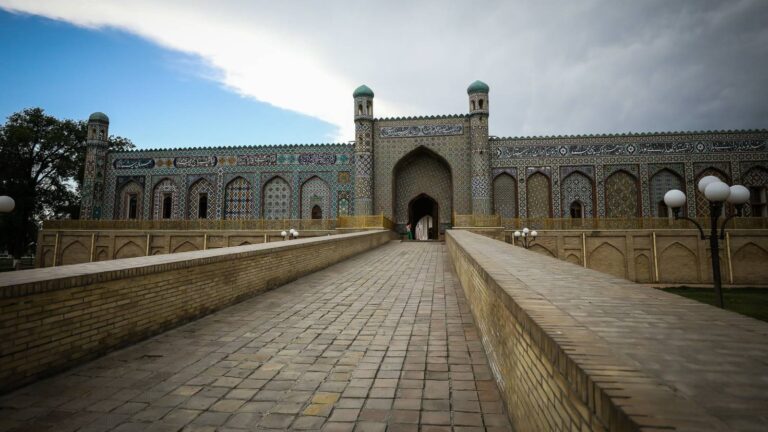Getting There
Kokand is easily reached by public transport from Tashkent or Samarkand. The medressa is set in the pedestrianised center of the city.
What to Expect
The medressa’s ornate façade, adorned with intricate tilework and delicate carvings, creates a stunning visual experience to this day. Inside, visitors can explore the medressa’s courtyards, classrooms, and prayer halls, marveling at the exquisite craftsmanship that has stood the test of time.
As you wander through the medressa, take a moment to appreciate the serene atmosphere and imagine the bustling academic life that once thrived within its walls. Today, the medressa’s tranquil ambiance offers an opportunity for reflection and contemplation.
Perhaps the most remarkable thing about the Narbutabiya madrasah is the almost complete absence of decor, which, however, creates an unforgettable impression of asceticism and the severity of its architectural appearance.
The brickwork is exposed, the interiors glow with the whiteness of ganch plaster. Only the front doors are decorated with a carved ornament that combines geometric elements with floral motifs. A modest stalactite cornice and a mihrab niche, decorated with a star-like pattern, make the premises of the mosque just a little more elegant than the darskhana.
History
The Kokand Norbutabiy Medressa was constructed in the early 19th century during the reign of the Khanate of Kokand, one of Central Asia’s most powerful states at the time.
During its early years, the medressa attracted renowned scholars and teachers, making it a centre of learning and cultural exchange. It stood as a symbol of the Khanate’s prosperity and intellectual prowess.

